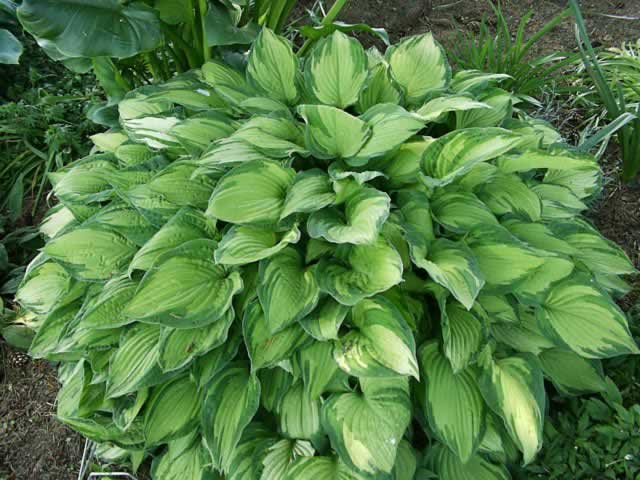
Hosta Plants
Hosta Plants
There are approximately 23 to 45 species of plants considered to be Hosta plants and are often regarded as being tolerant to shade. This genus is currently a part of the Asparagaceae family and the Agavoideae subfamily, which is native to the northeast area of Asia. They used to be referred to as Liliaceae. The name of the genus comes from Nicholas Thomas Host, who is an Austrian botanist. Funkia was the rejected name. It's a common name and can be found in older literature. Which the genus is referred to as Funkia. Hostas are also a kind of herbaceous perennial plant that grows from stolons or rhizomes. Hostas are produced on erect scapes, which are typically taller than leaf mounds.
Buy online at an online nursery.
Each flower on the hostas is pendulous and about 2 to 5 centimeters long with violet, white, and lavender tepals. The tepals are usually scentless. The only actively scented species of the hosta is the plantaginea; The plantaginea has white flowers and can be up to 10 centimeters long. It's a common species because the flowers open in the evening but are closed by the morning. This particular species blooms in the late summer, and it's because of this that it's often called an "August Lily." These flowers are very useful in the garden because their foliage is shade-tolerant while also providing a striking focal point. However, they draw the attention of voles, rabbits, deer, snails, and slugs, which can cause extensive damage to a garden if the proper measures aren't taken; However, some species of the genus are more resistant to slugs than others.
CLICK HERE to view beautiful perennials.

The Plantagenet originated in China but was introduced by Japan to Europe in the mid-19th century by Philipp Franz Von Siebold. Since then, newer species of the flower have been found. These flowers are frequently displayed at significant shows; the Chelsea Flower Show is one example. Some examples of cultivars include, but are not limited to; Wide Brim, H. venusta, sieboldiana (known as Blue Angel), fortunei (known as France), H. ventricosa, Tariana (known as Halcyon), ventricosa (known as Aureomarginata), Frances Williams, Sum and Substance, Krossa Regal, Golden Tiara, Sagae, June, and the Royal Standard. Plants that have become diseased with poxvirus must be destroyed immediately as they can transfer the virus to other plants through contaminated sap and get them infected.
The most common symptoms include; "ink bleed" marks which are dark green within the veins of yellow-colored leaves, in addition to collapsing tissue on those veins. Symptoms can take years to show, so any plant that may appear to be symptomless in an otherwise infected batch should be considered infected as well and properly disposed of as soon as possible.
This kind of perennial is also edible by humans. In Japanese cuisine. It's called "urui." The parts of the flower are eaten independently of the species; For some, it is the shoots. For others, it's the leaf petiole, and then for some, it's the whole leaf that's eaten. Younger plants tend to be more tender than older ones; therefore, they are more preferred by those who use them for cooking and those who consume them. You can also eat their flowers.
Species of this flower include; aequinoctiiantha, clause, clavate, gracillima, hypoleuca, longipes, longissima, minor, rectifolia, rohdeifolia, rupifraga shikokiana, sieboldiana, sieboldii, Montana, nakaiana, Takahashi, akinesis, Tardive, tibiae, tsushimensis, nigrescens, okamotoi, pachyscapa, ventricosa, venusta, yingeri, plantaginea, pulchella, pycnophylla, ibukiensis, jonesii, Kikuchi, kiyosumiensis, laevigata, densa, fluctuations, albofarinosa, alismifolia, calliantha, capital, and the cathayana species. The order of the species is asparagales as they come from the Monocots and angiosperms clades and the Plantae kingdom.






